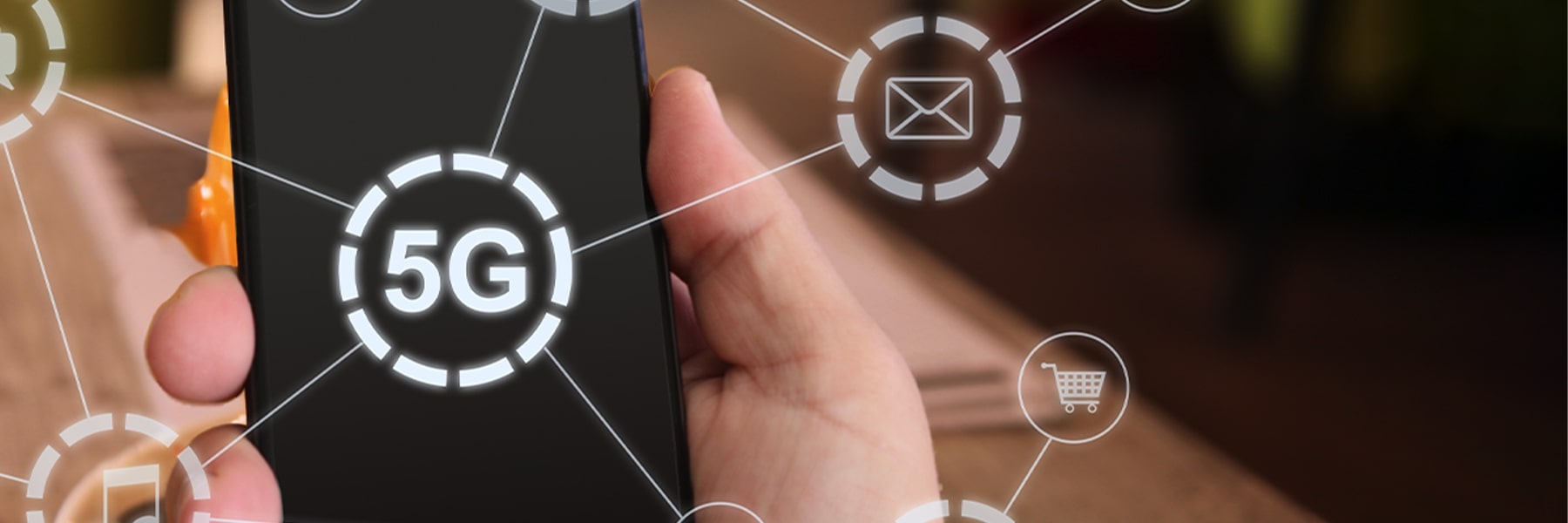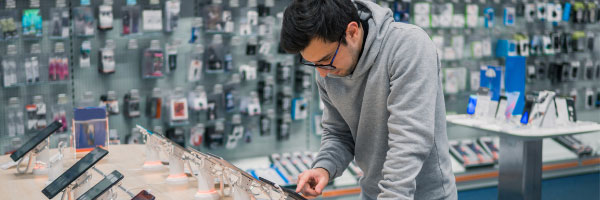4 Ways 5G Will Personalize In-Store Shopping Experiences
The relationship between consumers and technology is changing, and the rollout of 5G will accelerate this transformation. Thanks to exponential improvements in speed, latency, and load capacity, 5G will enable next-generation use cases such as mobile gaming, Augmented Reality (AR), Virtual Reality (VR), machine learning, and artificial intelligence (AI) to move into the main stream.
Just as the explosion of smartphones, mobile apps, and digital marketplaces revolutionized consumer experiences (and expectations) when 4G came on to the scene about a decade ago, 5G will usher in a new era of immersive digital experiences that can be personalized and optimized for individual consumers and specific scenarios on the fly.
So, what does this mean for B2C brands with brick-and-mortar locations? Digital experiences personalized to each consumer’s customer profile (omnichannel shopping history, demographic information, etc.) will become table stakes. Before we dive into how 5G will personalize in-store shopping experiences, let’s review the benefits of 5G vs. legacy 4G networks.
What’s the difference between 5G & 4G?
There are three major benefits of transitioning from 4G LTE networks to 5G, and each will have a direct impact on how retailers interact with in-store shoppers in years to come.
First, at maximum efficiency, 5G speeds may reach 10 Gbps. That’s 100 times faster than 4G speeds. For perspective, the seven-minute process of downloading a two-hour movie with a 4G connection will be cut down to a mere 10 seconds with 5G.
Second, 5G has significantly lower latency than 4G. This refers to the time it takes for a signal to travel from source to receiver and back. With 5G, latency may be less than five milliseconds, which is faster than the human brain processes signals from the eyes.
In real-world applications, that means that 5G-enabled devices can control objects connected to the Internet of Things (IoT) in near real-time. In addition, lower latency makes AI, AR and VR applications far more powerful. Users will benefit from previously unimagined levels of immersion in their VR and AR experiences.
Finally, 5G networks are expected to have far greater capacity than legacy 4G networks. That means fewer issues with load spikes, which has been a bigger concern since the sudden transition to virtual learning and remote work. This development will make smart cities a reality, along with self-driving vehicles, smart homes, and entirely new options for people to interact with their environment.
Translating the Benefits of 5G into the Retail Store
These three advantages will transform the retail experience by integrating past online behavior and other historical data to personalize the in-store shopping experience. This type of personalization has a direct impact on strengthening customer relationships, which in turn increases the lifetime value that each customer generates for a brand.
Positive customer experiences are associated with a 20 percent increase in customer satisfaction, a 10 percent to 15 percent increase in sales conversion rates, and a 20 percent to 30 percent increase in employee engagement. Better still, effective personalization of in-store retail experiences has been linked with 10 percent to 20 percent decreases in sales and marketing expenses.
Here are four ways 5G technology will personalize in-store shopping experiences:
1) True Omnichannel Experiences
Until now, true omnichannel experiences were the stuff of science fiction movies. Now, they will be a standard part of daily life. The use of 5G makes it possible to integrate physical and digital experiences, and it extends the highly personalized nature of online shopping into a brick-and-mortar store.
For example, smart signage can link to online browsing history, and AI-generated shopper profiles will enable retailers to create targeted offers and discounts instantly. What’s more, machine learning will enable AI-generated profiles to improve their level of accuracy over time.
2) Personalized Customer Service
Imagine a store where technology can track consumer moods. It’s going to be a reality with AI-powered computer vision. This improves staff members’ ability to detect when shoppers are frustrated or in need of assistance, so staff can intervene and resolve issues right away.
Big box retailers are particularly interested in the opportunities 5G technology presents for virtual customer service. They plan to develop on-demand virtual assistants accessible through in-store voice and video chats, which promises dramatic improvements in the retail experience for consumers.
3) Immersive Product Demos
Aside from opportunities to improve customer service, many retailers are exploring the concept of immersive product demos. Through the use of 5G-enabled AR and VR, product advertising is transformed from one-way communication to a two-way interaction.
4) Gamification of Retail Experiences
Finally, one of the most exciting next steps for in-store shopping is gamification. It has become quite clear that the future of mobile gaming will rely on 5G. Traditional video games have always been about personalizing entertainment, and retailers are taking advantage of 5G technology to connect consumers with their brand.
They intend to translate next-generation gaming experiences into the retail environment by engaging in-store customers with branded game experiences. This will encourage customers to spend more time in-store, particularly when there are personalized rewards involved. You can expect to see promotions and discounts offered to customers who achieve milestones in branded games.
5G-driven Personalization in Wireless Carrier Retail Stores
To capitalize on the enhanced capabilities of 5G in retail environments, wireless carriers must first digitize every possible aspect of in-store shopping, including the device-based demo experiences that provide customers with information on device specifications, pricing, and current promotions. Smith Micro’s ViewSpot® platform streamlines the digitization process for wireless carriers and other smartphone retailers by bringing in-store device demonstrations to life with dynamic content and interactive components. The platform’s backend management interface, ViewSpot Studio, makes it easy to update content on any and all in-store devices and helps wireless carriers roll out demo experiences that leverage the latest 5G capabilities. When running on in-store demo devices, ViewSpot also collects valuable analytics to provide carriers with actionable insights based on actual customer behavior.
Empowered with this insight and the capability to create/deploy data-driven retail experiences quickly, wireless carriers can deliver the personalized shopping environments that consumers in the 5G era expect. To learn more about the ViewSpot platform, visit: smithmicro.com/viewspot/






